
Every year, the U.S. Consumer Product Safety Commission has an "Agenda and Priorities" Hearing where anyone, including you and me, can present oral or written comments to the agency to let them know what you think their priorities should be for the coming fiscal year(s). You can also provide feedback and suggestions on how they could essentially do their job more efficiently.
I've submitted both oral and written comments for the past several years. Now that we've finally gotten the agency to engage in rulemaking for Clothing Storage Units and have a mandatory Federal Law under the STURDY Act from the CPSC, this year, I submitted comments on behalf of Parents Against Tip-Overs with a focus on how the agency can improve the public's awareness of who they are and what they do.
In case you were wondering, all comments are public and yes, they do read every one of them. Here is the transcript of the comments I submitted this year on behalf of Parents Against Tip-Overs. What do you think of our suggestions?
Agenda and Priorities FY 2025 and/or 2026
Written comments submitted on Behalf of Parents Against Tip-Overs
by
Kimberly Amato, Vice Chair, Parents Against Tip-Overs
On behalf of Parents Against Tip-Overs (PAT), a nationwide coalition of parents who all lost children to furniture tip-overs, I’d like to begin by thanking the CPSC and each of the Commissioners for the opportunity to provide comments and suggestions from a consumer point of view on what the agency should focus on in the coming fiscal year(s).
I’d also like to thank the Commissioners and dedicated CPSC staff members who have demonstrated in recent years exactly what the CPSC is capable of when it comes to truly protecting consumers, and especially children, through rulemaking, recalls, unilateral safety warnings, and engagement with all stakeholders on issues of consumer safety. We hope this engagement and swift and decisive action continues.
As both consumers and experienced parent advocates, PAT offers a unique perspective to the CPSC. We have several suggestions on what the agency's priorities should be both for tip-over awareness and prevention and more generally, including but not limited to improving the agency’s outreach, education, and communication with all stakeholders in the product safety space, and the very people you are trying to protect; average, everyday, American families.
Enforcement of the new mandatory direct final rule for clothing storage units (CSUs)
It has been more than seven months since the direct final rule for CSUs became effective, which is more than enough time for manufacturers/retailers to sell through inventory manufactured before the September 1, 2023 effective date. In fact, IKEA just announced on April 16th that they are now only selling CSUs compliant with the Federal mandatory standard and they were the first manufacturer and retailer to do so.
We both request and expect the agency to devote and continue to devote resources toward vigorous enforcement of the CSU standard and by all means available to the agency to do so, including swift action should an incident be reported or a violation found. We also expect information on reported incidents, whether they are with compliant or non-compliant CSUs to be made public as soon as possible.
The Anchor It! Campaign
I have personally been involved with the Anchor It! Campaign since before it officially launched in 2015 and strongly believe it remains a vital safety campaign. However, the sheer length of time it takes to make even minor changes to the Website, update visual assets, consistently create and/or post timely social media content, or effectively engage with and harness the collaborative and amplifying capacity of the Anchor It! collaborators clearly shows that the campaign is underfunded and lacking the staff resources to fully execute its mission.
PAT communicates regularly with the campaign and has provided numerous suggestions for the improvement and evolution of the campaign and its online and visual assets over the years, many of which have been incorporated, albeit far slower than we would like. We appreciate and value the collaborative relationship PAT has with the campaign and feel we provide much-needed information and feedback from the consumer perspective. We look forward to the continued growth and reach of the campaign.
Obviously, furniture safety is PAT’s mission and the agency is well aware that the new CSU rule does not eliminate or reduce the need to raise awareness about the importance of anchoring ALL furniture, TVs, and appliances to the wall to prevent a potentially deadly tip-over.
We have also become aware that many Americans think the new CSU rule applies to all furniture or that only dressers pose a risk and now that there is a mandatory standard, there is no longer a need to anchor furniture to the wall. Many still think tip-overs are only a concern if the furniture is heavy, “cheaply” made, tall, or if they have small children in the home.
We all know that any unanchored furniture, regardless of its size, weight, height, design, or manufacturer has the potential to tip over and cause catastrophic injury or death. We also know that most Americans still don’t anchor their furniture or TVs. All of these myths and misconceptions need to be more adequately addressed by the Anchor It campaign.
The most recent CPSC Tip-Over report indicates that tip-over injuries and deaths are still happening to older children and adults (which the new mandatory CSU rule does not protect) and that TVs as well as other types of furniture not covered by the CSU standard are also responsible for injuries and deaths. Perhaps most alarming is that Americans over the age of 60 now represent 26% of tip-over fatalities! This demographic is not currently addressed by the Anchor It campaign and needs to be.
In light of all of this, we have the following suggestions for the Anchor It Campaign.
Specifically, we suggest the Anchor It! Campaign expand it’s breath and depth to include:
- Continued diversity in messaging including those differently abled (with canes or walkers and in wheelchairs for example).
- A dedicated social media handle for the Anchor It! campaign to give it better name recognition and promote sharing of posts. Pool Safely, another CPSC campaign, has its own social media handle, why doesn’t the Anchor It program?
- Develop clear and specific expectations and guidelines for Anchor It! Collaborators to encourage collaborators to actively promote the campaign, website, social media posts, and its assets through their organization with the CPSC’s desired talking points. Collaborators need guidance, tools, and clear expectations for their participation in the program. Namely, actively engaging with the campaign and amplifying social media and campaign messaging to their networks. Simply adding their name to a list does nothing to protect the public from the clear and present danger of tip-overs, action is required!
- Actively seek collaborative opportunities with the furniture industry (AHFA, IKEA, and other manufacturer/retail organizations) the TV industry, and other child safety organizations like Safe Kids and the Injury Free Coalition for Kids to promote anchoring and the Anchor It! Program and drive traffic to the Web site. This is a perfect opportunity for the CPSC, consumers, and the industry to work collaboratively for consumer safety!
- Actively promote the campaign in the media at other times of the year outside of the Super Bowl. Partnering with other organizations and promoting safety days/weeks/months that can be tied into the Anchor It campaign’s objectives would be an easy way to raise awareness and reach more consumers.
- Incorporate more men/father figures and grandparents in tip-over messaging focusing on the importance of anchoring for your children, grandchildren, and even protecting yourself (targeting elders). This is something PAT has been asking the Anchor It! Campaign to do for quite some time now. IKEA has just launched a campaign doing exactly this and it’s fantastic. The CPSC needs to either partner with IKEA and/or create similar content and it needs to be a priority, otherwise, as our population continues to age and live longer, that statistic about older Americans dying from a tip-over will continue to rise and that is unacceptable!
- We strongly suggest a new PSA featuring grandparents, a family practice physician, and a parent(s) to address the myths and realities of tip-overs and prevention as they exist today. It can be a conversational piece or individual short PSAs that say the same thing from different perspectives that are pieced together into one PSA.
- Develop a new video detailing how to anchor, with demonstrations of how to perform each step, how to account for different wall types, and address risks and benefits of certain anchoring components (metal vs. plastic and name brand vs. “knock off”). IKEA has just created a similar video and it’s very engaging.
- Messaging around flat-screen TVs and that even though they are lighter, they still pose a significant risk of injury or death. We suggest using a bowling ball analogy as it’s a powerful image nearly everyone can relate to. A 10-pound TV is the same as dropping one bowling ball on a child’s head.
- Develop a new infographic with statistics and how to anchor (parents have overwhelmingly given us feedback that they like infographics best and are more likely to read them).
- Develop messaging around the secondhand market including how to find out if a product has been recalled. This can be specific to Anchor It, but also more general messaging around the safety of second-hand products and what consumers need to be aware of and on the lookout for.
- Updating the Anchor It! Website in the following ways
- Current statistics
- Prominent information about the risk of tip-overs to elders
- A link to saferproducts.gov on the home and other pages that captures the visitor’s attention “Have you ever experienced a tip-over, even if no one was hurt? Please let us know, you could save a life!”
- A prominent tab about recalls. Not just a link to recalls.gov like the pop-up that already exists on other CPSC pages, but a tab that brings the visitor directly to a list that includes all furniture and TV-related recalls, not just CSUs, going back at least 15 years (most people keep furniture for a long time).
- Updated pictures to reflect flat-screen TVs, grandparents, fathers, mothers, the differently abled, and including not only dressers/CSUs in scope, but also CSUs that are not within the scope of the mandatory standard, shelving units, wardrobe style CSUs, etc.
- Making it much easier for visitors to find information about the collaborator program (how to join, what the expectations are, the benefits of partnering with the CPSC, how they can help report incidents and educate the public, etc.) and making toolkits available and sent via e-mail at least a few weeks ahead of the targeted publication of the social media assets so collaborators can plan to use and promote them.
General Communication
The CPSC is tasked with protecting consumers from product safety hazards. Unfortunately, most Americans still have no idea the agency even exists let alone what the agency does. If they have heard of the CPSC, most think the agency only issues recalls, because that’s what they hear in the news. They are unaware of the other things the CPSC does to protect them nor are they aware of the numerous product safety resources available from the agency!
There are several areas where we strongly feel the agency needs to devote resources to improve the public’s awareness of what the agency does, so the public can truly reap the benefits of what the agency has to offer.
Likewise, the agency needs to do more to engage professional and medical organizations to educate them and improve incident reporting. Devoting resources toward educating the public about the role they can and should play in product safety through increasing awareness of the role of the Consumer Ombudsman and reporting incidents to saferproducts.gov are just some examples.
Data collection and sharing from outside sources
Incident data is key to protecting the public from product safety hazards. While the NEISS system is supposed to provide incident data representative of the entire country, we know that key data (incident reports) is being missed. Data that can and should come from all hospitals, urgent care centers, medical examiners, and doctor’s offices. We also know that there are countless near misses and minor injuries not accounted for in the NEISS data or direct reports to the CPSC either because they were never seen by a provider or because the provider didn’t know to report it. At best, the data the CPSC currently receives provides low-ball estimates of actual injuries and deaths.
Surely, injuries and deaths from tip-overs and other product safety hazards are going unreported because those in a position to report them simply don’t know they should be reported to the CPSC, or how and why to do so. The agency can and should do more to gather as much incident data as possible, for it will prevent even more injuries and deaths.
For years PAT has been asking for the CPSC to devote resources to educating the general public about the agency and its programs while actively educating and collaborating with other groups and organizations in a position to improve not only the public’s awareness but also the timely and accurate reporting of incidents, injuries, and deaths from consumer products.
Reaching these individual groups can be as simple as creating a general training resource (Webinar or YouTube video and an informational PDF/brochure) about programs like saferproducts.gov and the how and why of reporting product safety incidents, and then disseminating it to all of the relevant professional organizations on the state and national level so they can, in turn, share it with their members. Many of these resources already exist on the CPSC Website such as collateral about saferproducts.gov aimed at different professional groups, the MECAP program, collateral around recalls.gov, anchor it, and the Neighborhood Safety Network that can be easily and quickly updated and distributed. There are also existing infographics that could be updated rather than created from scratch. This should not take a lot of time or money to execute and would aid the agency in doing its job more efficiently in the long run.
Unfortunately, because of the lack of awareness about CPSC, creating or reviving these resources isn’t enough, you have to bring the information to these other organizations and ask them to partner with the CPSC to distribute the information because it’s unlikely anyone will find it otherwise. When you know better, you do better, but first, they have to know! The CPSC Website indicates that there are product Safety Contacts in every state. They are perfect partners in educational outreach efforts but it has to come from within the agency and be pushed out to safety partners and collaborators with direction and purpose!
Partnering with relevant organizations and using your existing content and contacts lessens the burden on the agency while expanding the agency’s reach and improving incident reporting and consumer safety.
At a minimum, the CPSC needs to actively connect with Physicians (pediatricians, family practice physicians, emergency room and urgent care staff), nurses, child/daycare providers, preschool teachers, Department of Public Health child and family service workers, organizations that work with elders (Assisted Living and Nursing Home organizations, AARP, the National Council on Aging), National child safety organizations like Safe Kids, and medical examiners and funeral directors.
Collaborating with the local, state, and national trade organizations for each of these groups will exponentially expand the awareness of the role of the CPSC, the availability of the Consumer Ombudsman, how and why to use saferproducts.gov and other valuable agency safety resources. It would also improve and expand timely and accurate incident reporting and provide additional avenues for vital safety information to reach parents, caregivers, and all those at risk for product safety hazards. The agency likely already has contacts with many of these National organizations or knows someone professionally who does.
Agency Awareness and Engagement with ALL stakeholders
The CPSC has a huge awareness and image problem as not only the average American but many of the previously mentioned organizations, who can and should be reporting incidents to the CPSC, are often unaware the agency even exists, let alone all the agency does and provides for consumers. It’s long past time for the agency to actively engage with the public and stakeholders in a more personal, conversational, collaborative, and immersive way.
For a long time, only product manufacturers, attorneys, and those in Congress knew who the CPSC was and what the agency does. Those relationships were often quite adversarial and in many ways, still are. Consumers like us typically only find and engage with the CPSC because we experienced the very kind of tragedy the agency is tasked with preventing, yet the role of the consumer is vital to the agency’s success, ideally before any tragedy has occurred.
We strongly encourage the CPSC and product manufacturers/companies to address consumer safety collaboratively whenever possible. It shouldn’t take parents whose children died from a product safety hazard to spend years of their lives as advocates to be responsible for bringing everyone to the table and holding them accountable, the CPSC included, to facilitate product safety solutions that should have existed long before our children died. Yet that is so often the catalyst for rulemaking. PAT’s success in doing so, however, proves that such collaboration is not only possible but incredibly effective. It would be even better if consumer engagement and this collaborative approach happened before tragedy struck. We’ve paved the way, it’s time to follow the path.
The CPSC shouldn’t have to sue companies to get their cooperation in a recall or to get an unsafe product off the market. Consumers should not have to sue companies who choose multi-million dollar lawsuit settlements as the cost of doing business over fixing the problem that resulted in a child(ren) losing their life. Nor should any company or industry wait to be backed into a corner by the threat of CPSC rulemaking or a bill that might just become law before they do the right thing or finally participate with all stakeholders to collaboratively identify and fix product safety hazards, rather than do so as soon as they are identified.
There is an opportunity here and now to change the model and relationship between the CPSC and industry/ corporate entities and we encourage a more collaborative approach by all stakeholders going forward with all product safety hazards. Change can and should happen on all sides.
It’s also important to continue to have technical staff members of the CPSC engaged in the development of voluntary consensus standards like those through ASTM. The knowledge and perspective they provide is essential and their presence fosters a positive relationship between the CPSC and the industries rather than an adversarial one. We hope it continues and grows.
Engaging with all stakeholders also means the Commissioners, communications staff, and certain other staff like the ombudsmen, need to get out and participate in conferences and conversations about safety Nationally and Globally more frequently. Another important way the agency can and should engage with the public is through participation in podcasts, roundtable discussions, and other social and multimedia opportunities. The product safety world and the general public needs to get to know both the agency and the Commissioners more personally and effectively and through channels that already exist to do so.
The agency’s participation at product safety conferences like ICPHSO (where there is an entire CPSC day that everyone looks forward to every year!), Safe Kids Worldwide, and others is vital to engaging with stakeholders in the product safety space and increasing local, national, and global awareness of what the agency is doing to keep the American people safe, how they do it, and the role every single person can play in helping the agency accomplish its objectives. It provides an opportunity to show what the CPSC has to offer all stakeholders, and to learn what others are doing in the product and consumer safety space. It’s an excellent opportunity to interact with and build trust and brand recognition with members of industry, other product and consumer safety professionals, and consumers and product safety advocates. We are all more effective when we work together and learn from each other!
The CPSC should seek to expand these opportunities and where possible, participate in panel-style or round table discussions with other stakeholders relative to the product or consumer safety issues being discussed. Ideally, CPSC members who attend conferences should stay for the duration, as it provides additional opportunities for engagement, networking with consumers and other stakeholders, and education, all vital opportunities for a small agency with a wide scope.
Engagement via social media and other safety organizations
While social media may have helped increase awareness of the agency’s existence, the safety messaging is still not reaching most Americans. Social media impressions mean nothing if you can’t measure positive action as a result. The agency must ensure the messaging is not lost in the delivery method. This has improved recently in the Twitter/X posts and we hope it continues.
There are simple things the agency can and should do to address these issues. Some suggestions include:
- Informational videos on the CPSC YouTube channel about who the CPSC is and what the agency does, recalls.gov, and saferproducts.gov (one for each topic)
- Informational video for consumers on the role of the Consumer and Small Business Ombudsmen with links to their respective pages on the CPSC Website and contact information
- Add links to recalls.gov and saferproducts.gov to the landing pages of every other CPSC online resource (like the pop-ups that exist on some Website pages already)
- Create social media content that would provide all of the above information to the public and other stakeholders.
The agency should also proactively seek opportunities to engage with media in the local community as well as nationally. There are plenty of opportunities with Baby Safety Month, Burn and Fire Awareness, poison prevention, window safety, playground safety, older Americans month, Grandparent’s Day, Father’s and Mother’s Day, Water Safety Month, etc. The agency can do a lot more and reach a wider audience by partnering with other organizations and where possible, with parent and consumer advocates, on messaging around these dedicated product safety days, weeks, or months, and then inviting the media to report on them.
The CPSC doesn’t have to reinvent the wheel, just work with the other existing spokes in the wheel collaboratively to send a louder and more comprehensive message and boost the public’s awareness of the CPSC in the process.
Engaging with consumer and parent advocates
Consumer advocacy groups have long engaged with the CPSC, and opportunities exist for collaboratively educating the public on the role and scope of the agency and its resources with national consumer advocacy groups.
Through working with the members of PAT and other parent advocates, we hope the agency has realized the benefits of engaging with consumers and parent advocates. Consumers, particularly parent advocates, offer a unique and important perspective to the agency, yet are likely unaware of the many ways they can engage with the agency, and more needs to be done about that.
Often, parent advocates like those of PAT, have done extensive research and have a greater depth and breadth of knowledge about their product safety passion than many other stakeholders, and often, a social media following that can provide valuable information to the agency, including important data. Consumer and parent advocates can also distribute product safety information to the public on behalf of the agency. The relationship between PAT and the Anchor It! campaign is a perfect example of the benefits of such a collaboration.
Conclusion
In closing, the CPSC is a small but mighty agency with a broad scope and a life-saving mission to protect consumers from product safety hazards. The agency needs significantly increased funding to do the job it has been tasked with. However, there is a lot that the agency can and absolutely should do right now with the existing Website content and marketing collateral, and by leveraging the many opportunities for collaboration and amplification of its safety messaging. The things we’ve suggested in these comments should not require a tremendous amount of time or money, just prioritization by the agency to do a better job educating and engaging with the very people whom the agency is tasked with protecting. It will make us all safer.
The great safety resources the agency already has and those it needs to pursue and improve are useless if the agency doesn’t devote the time and personnel to ensure the public knows the agency and the resources exist! We look forward to how these suggestions are incorporated in the coming year(s).
Thank you.


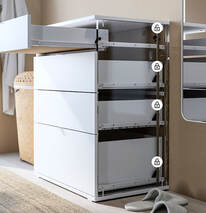


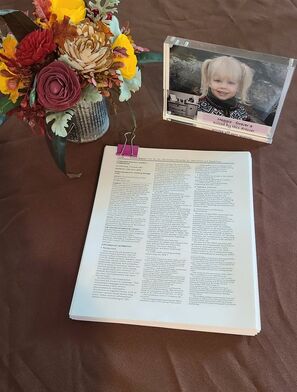
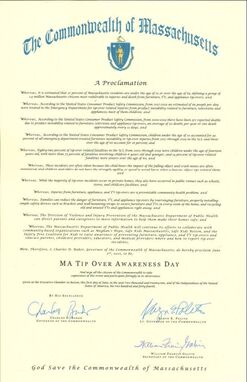
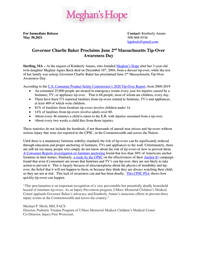
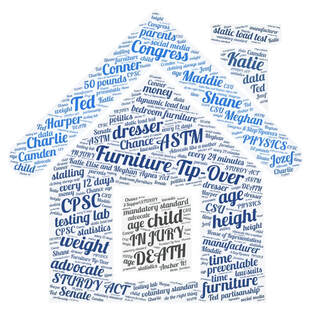
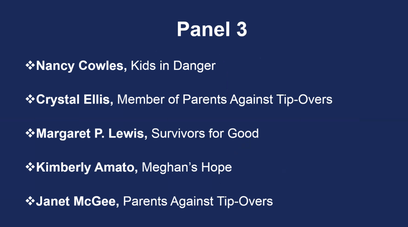


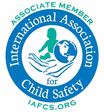
 RSS Feed
RSS Feed